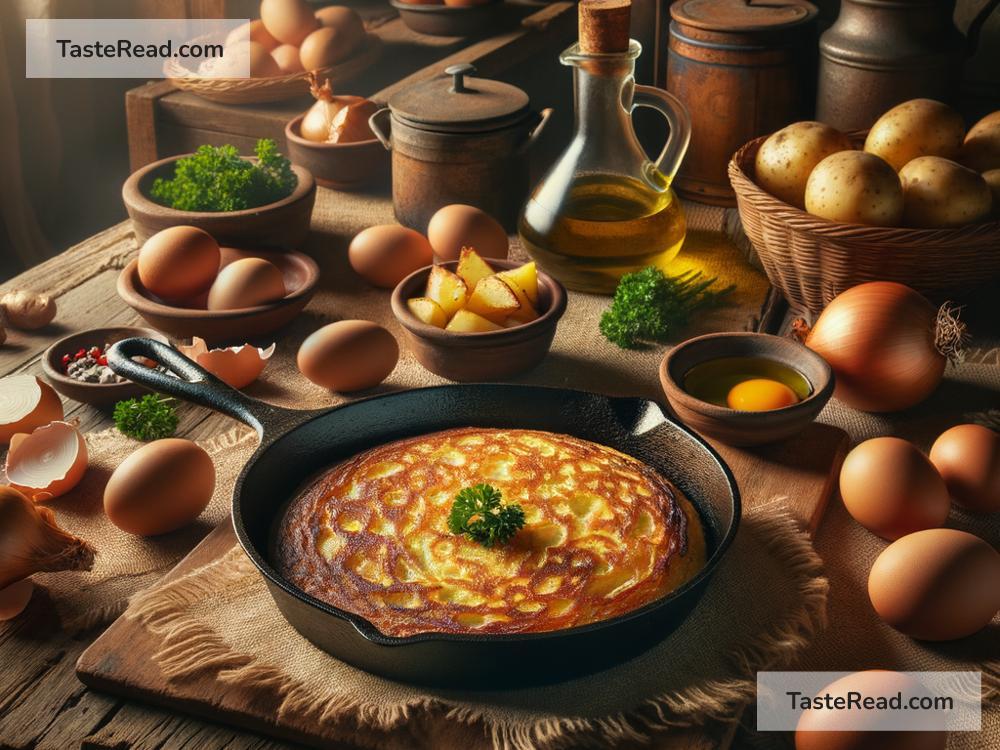The Development of the Spanish Tortilla
The Spanish tortilla, also known as tortilla de patatas, is one of the most famous dishes in Spanish cuisine. It is a simple yet delicious recipe made with just a few ingredients: potatoes, eggs, oil, and (sometimes) onions. However, like many traditional foods, the Spanish tortilla has an interesting history that reflects the development of Spain itself. In this blog post, we’ll explore how this humble dish came to be, its cultural significance, and how it has evolved over time.
Early Beginnings: Before the Potato Came to Spain
The story of the Spanish tortilla starts with the potato, one of its main ingredients. Potatoes didn’t exist in Europe until the 16th century — they were native to South America. Spanish explorers brought potatoes to Europe after their expeditions to the New World. At first, people didn’t know what to do with this strange tuber. It took time for potatoes to become a popular food, but once they did, they became a staple ingredient in Spanish cooking.
Before potatoes existed in Spanish kitchens, eggs were already a common food. Eggs were easy to find and could be used in many dishes. People made simple omelets with eggs, but these early versions didn’t include potatoes because they weren’t available yet.
The Introduction of Potatoes
Potatoes became widely used in Spain during the late 18th century because they were cheap, nutritious, and easy to grow. Farmers and families began incorporating potatoes into their meals, and soon they appeared alongside eggs to create the earliest versions of the Spanish tortilla. Although we now think of the tortilla de patatas as a classic dish, it didn’t become widespread until the 19th century.
One of the first written records of the Spanish tortilla comes from an anonymous manuscript called the “Apuntaciones Sobre La Patata” (Notes on the Potato), published around 1817. It describes a recipe for combining potatoes and eggs, seasoned with salt. The simplicity of the dish made it perfect for rural families and farmers who needed something inexpensive but filling.
The Legend of the Spanish Tortilla
There is an interesting legend about the origins of the tortilla. The story says that during the early 19th century, a general named Tomás de Zumalacárregui created the tortilla as an easy-to-make food for soldiers during the Carlist Wars (1833–1840). Zumalacárregui supposedly combined eggs, potatoes, and oil to feed hungry troops on the battlefield. Although this story is popular, historians believe the tortilla existed before the general’s time. However, the tale highlights the practicality of the dish — it was something that could satisfy many people with just basic ingredients.
Regional Variations and the Onion Debate
As the Spanish tortilla gained popularity, different regions of Spain began to put their own spin on the dish. Some people love adding onions to their tortillas, while others prefer the pure taste of potatoes and eggs without any extra ingredients. This small difference has sparked heated debates between onion-lovers (called “con cebolla”) and those who prefer tortillas without onions (“sin cebolla”). In fact, this debate is so well-known that it has become a joking topic in Spain. Regardless of which version people choose, the tortilla remains deeply loved all across the country.
Other variations also exist. For example, some regions enhance the recipe by including ingredients like peppers, chorizo, spinach, or cheese. These creative variations keep the tortilla exciting and allow cooks to adapt the dish to their preferences.
From Rural Kitchens to Worldwide Fame
The tortilla de patatas was originally a dish for rural families, but it didn’t stay limited to the countryside. Over time, it became a symbol of Spanish hospitality and tradition. Today, you can find tortillas everywhere — in restaurants, bars, and homes across Spain. It is also common to see tortilla served as a snack in Spanish “tapas” culture. It’s paired with bread, olive oil, or even a refreshing drink.
Beyond Spain, the Spanish tortilla has become popular internationally. People from all over the world have learned how to make it and often add their own twists to the recipe. Its simplicity makes it easy to prepare, while its flavors are universally appealing.
How the Tortilla Represents Spanish Culture
The Spanish tortilla is more than just food. It represents Spanish values of simplicity, resourcefulness, and togetherness. Each tortilla tells a story of how basic ingredients can be turned into something delicious and satisfying. It also reminds us of Spain’s agricultural history and how the arrival of the potato transformed European cooking.
In modern Spain, the tortilla continues to bring people together. Whether it’s shared among friends at a bar or cooked at home for family meals, the tortilla creates moments where people can connect over food. It’s proof that the simplest things in life can bring the most joy.
Conclusion
The Spanish tortilla has come a long way from its humble beginnings. Once just a rural dish for farmers, it is now an iconic symbol of Spanish culture and cuisine. Its history reflects Spain’s journey through time — from the arrival of the potato to the development of regional cooking traditions. With its delicious taste and versatility, the Spanish tortilla remains a beloved dish that continues to evolve and inspire cooks worldwide. Whether you prefer it with onions or without, one thing is certain: the Spanish tortilla will always have a special place in the hearts (and stomachs) of all who enjoy it.


